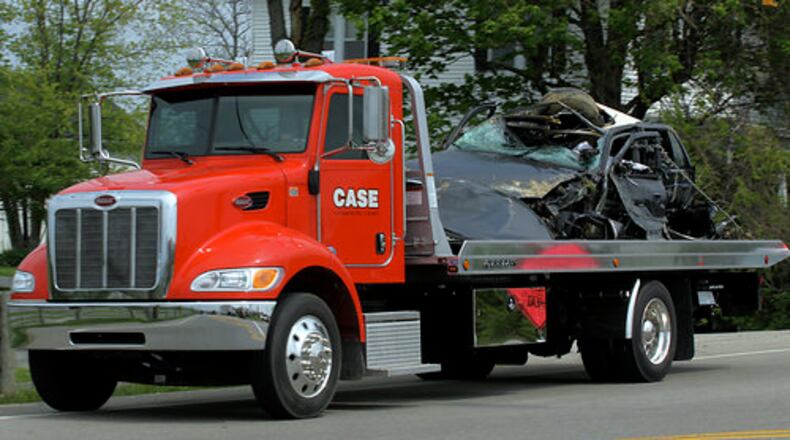Hall is recovering, but soon after, the sheriff’s office announced it would stop using the tire deflation devices.
In May 2011, Warren County Sheriff’s Sgt. Brian Dulle was killed on U.S. 42 at Utica Road while attempting to deploy tire deflation devises for a car being pursued. He was outside his cruiser during the early morning hours of May 10, 2011 when the suspect drove the speeding car off the side of the road and into him, killing him instantly, according to the Warren County Sheriff’s Office
Last year, Springdale police officer Kaia Grant was killed deploying tire deflation strips to stop a vehicle on Interstate 275.
Departments in Butler County say they still have the devices, but use is limited, especially on narrow roads in cities where they become more dangerous and often less effective.
“The issue with ‘Stop Sticks’ is you have to be in the right place and in the right position, like on the interstate when the pursuit is going in a nice linear direction. That’s when you can see where they are going and it is easier to deploy them,” said Middletown Police Maj. Eric Crank. “But inside cities, it is much harder. There are so many ways a pursuit could go, too many side streets to pull off on. And deploying them safely is always a concern on narrow streets.”
Crank said the department cruisers do carry the equipment, but he doesn’t remember their use in recent years.
“They are difficult to deploy a times, especially if you don’t practice with them. That’s also an issue, because most agencies they get put in the trunk of a car and they sit there. And many agencies just don’t do annual training with them, so that is part of the issue,” Crank said “It is like any tool in this job or any job, if you don’t practice with it, then you are probably not going to be very effective with it.”
Crank said proper cover to protect the officer, other motorists and even parked vehicles is also key.
“You have to factor in the traffic on the road. You can’t just stop a whole herd of traffic because you think someone is coming that way,” Crank said. ““You have to get proper cover for yourself,. If you are not in a position where you have good cover, there’s a chance they are going to runover you or or hit your cruiser. A lot of things can go wrong. There are a lot of safety considerations and I think that’s why a lot of agencies have moved away from them.”
Hamilton police also have tire piercing devices, but Sgt. Rich Burkhardt said is also limited in the city.
“We do train with them, but I have never seen them used,” he said. “It is much harder in a city, when you don’t know if the (suspect) is going to turn left or right. It’s not like on a straight away like the highway.”
Burkhardt also said pulling the spikes in quickly after deployment is necessary to avoid damaging the tires of pursuing cruisers.
“There are just a whole lot of things that can go wrong,” he said.
Fairfield Police also carry the devices in patrol cruisers and last trained with them this fall, which included practical exercises, according to Sgt. Rebecca Ervin.
“In the past two years, they have only been deployed three times,” Ervin said. “The last time they were used was in May.”
In 2011 after Dulle’s death the use of tire deflating devices was suspended by the Butler County Sheriff’s Office pending a review of it’s policy. But they are now used as part of standard equipment in BCSO cruisers.
Butler County Sheriff’s Office Capt. Rick Bucheit said, “We do still have them and train with them at least annually. We stress when they deploy them that they have a good cover.”
He said, if the devices are deployed properly there is a chance to maneuver them if the suspect vehicle changes lanes or turns off the road, but it does take skill, training and the right scenario.
“We do what we do because we want to be the good guys and sometimes when you are in that situation and your adrenaline is pumping, you are not always thinking of yourself first. The worst case scenario is you throw them and you are standing there wide open.”
About the Author

